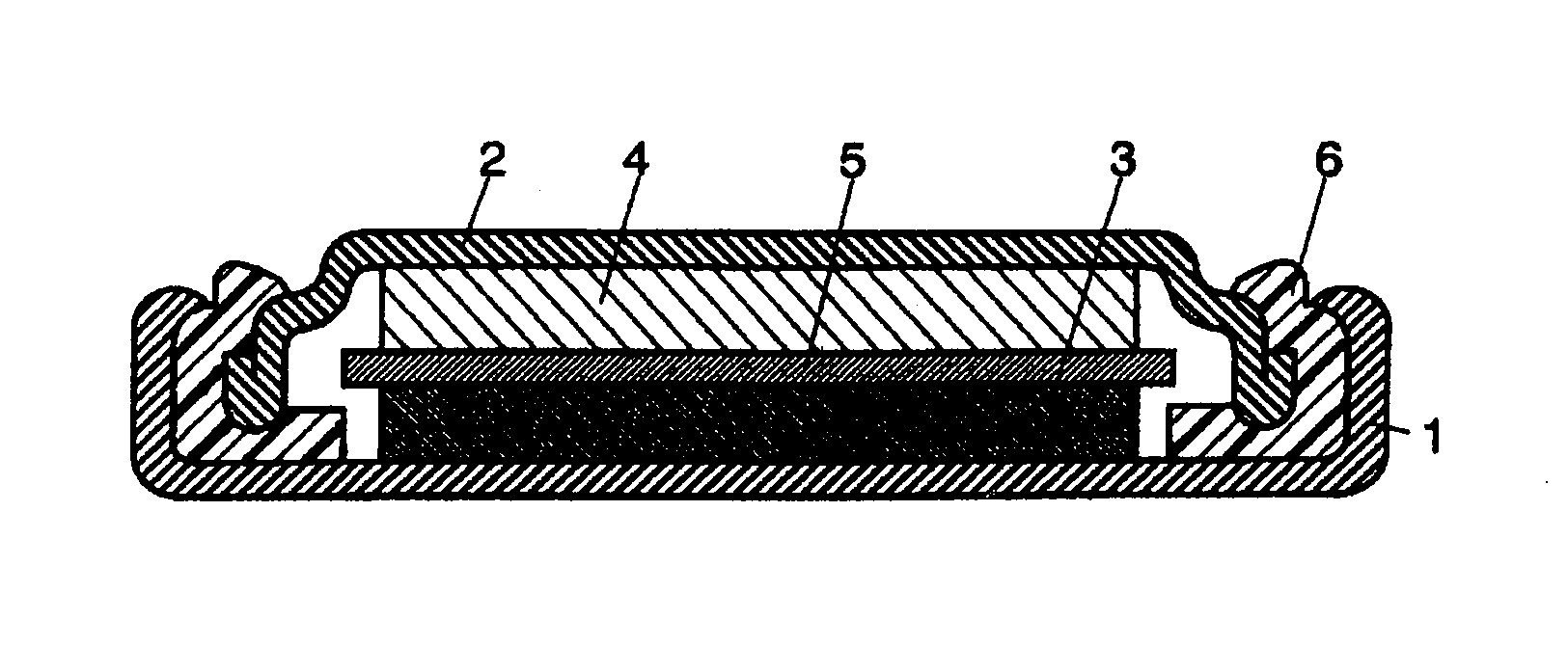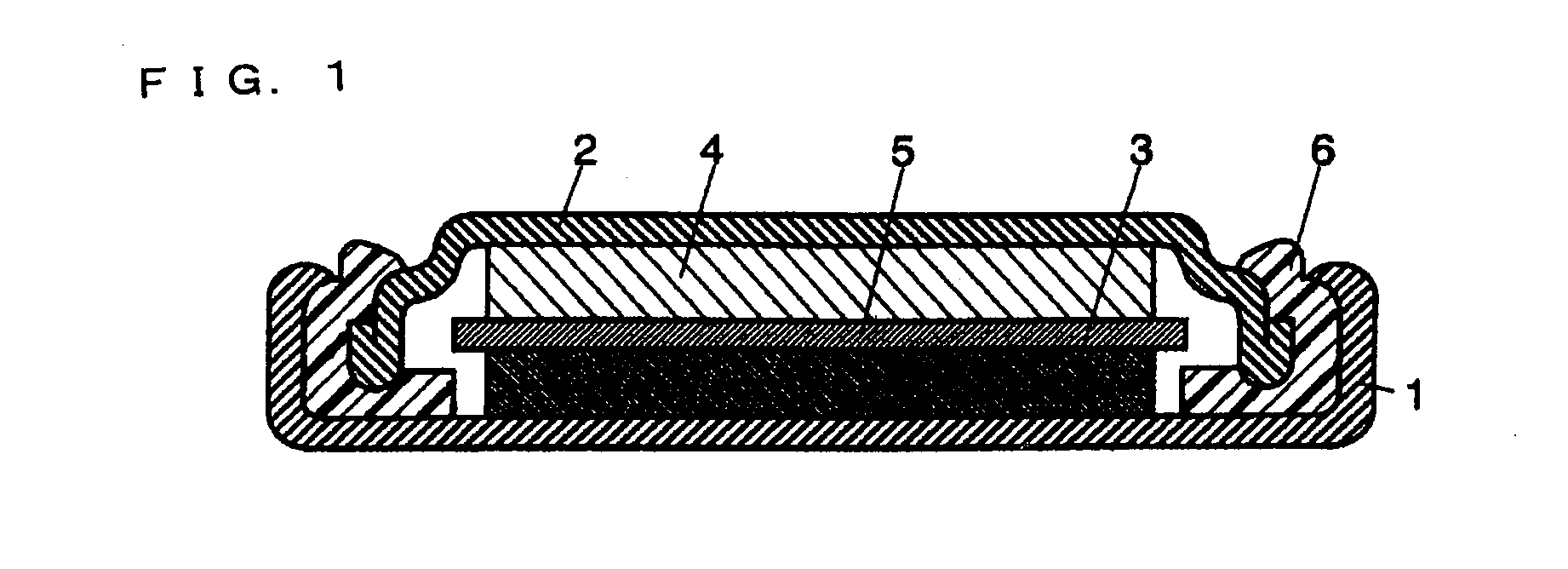Lithium battery
a battery and lithium technology, applied in the field of lithium batteries, can solve the problems of reducing reducing the internal pressure of the battery, and reducing the discharge characteristics of pulses, so as to achieve the effect of improving the reliability of the battery, suppressing gas generation, and improving storage characteristics and reliability at a high temperatur
- Summary
- Abstract
- Description
- Claims
- Application Information
AI Technical Summary
Benefits of technology
Problems solved by technology
Method used
Image
Examples
examples
[0058]Next, the present examples will be described with reference to a specific example.
(1) Preparation of Manganese Oxide in Mixed Crystal State
[0059]First, manganese dioxide, lithium hydroxide and lithium carbonate were mixed in a prescribed ratio, and this mixture was baked at 800° C. to prepare spinel-type lithium manganese oxide. The resultant spinel-type lithium manganese oxide was immersed in sulfuric acid solution to remove lithium from the lithium manganese oxide. Thereafter, washing and drying processes were carried out, thereby preparing λ-type manganese oxide.
[0060]Next, the resultant λ-type manganese oxide was heat treated at 200° C. for 2 hours in the air. In this manner, manganese oxide in mixed crystal state was obtained containing β-type manganese oxide and λ-type manganese oxide, having a specific surface area of 4.0 m2 / g, wherein the β-type manganese oxide had a crystallinity of 600.
[0061]The crystallinity and the specific surface area of the manganese oxide were ...
PUM
| Property | Measurement | Unit |
|---|---|---|
| temperature | aaaaa | aaaaa |
| temperature | aaaaa | aaaaa |
| temperature | aaaaa | aaaaa |
Abstract
Description
Claims
Application Information
 Login to View More
Login to View More - R&D
- Intellectual Property
- Life Sciences
- Materials
- Tech Scout
- Unparalleled Data Quality
- Higher Quality Content
- 60% Fewer Hallucinations
Browse by: Latest US Patents, China's latest patents, Technical Efficacy Thesaurus, Application Domain, Technology Topic, Popular Technical Reports.
© 2025 PatSnap. All rights reserved.Legal|Privacy policy|Modern Slavery Act Transparency Statement|Sitemap|About US| Contact US: help@patsnap.com


